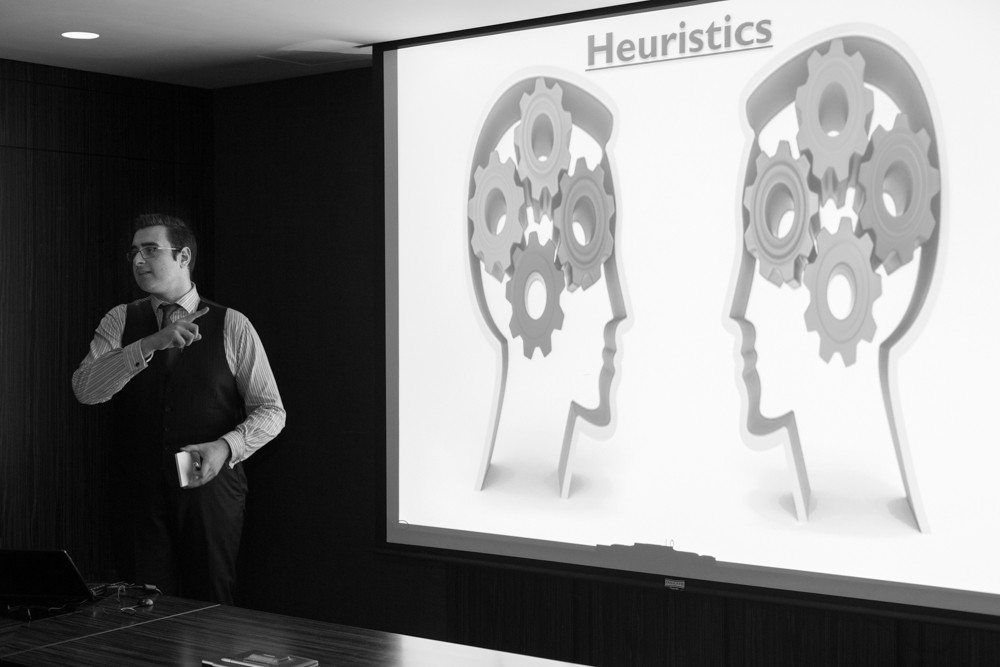Cognitive Biases in Behavioral Finance
Post on: 18 Октябрь, 2015 No Comment

Cognitive Biases in Behavioral Finance
February 24, 2013
Guest Post:
Many concepts in finance and economics are predicated on markets behaving rationally. Unfortunately for economists everywhere, humans can often behave irrationally, thus ruining many predictive models. In response to this apparent failing in what is called the “efficient market hypothesis ,” a segment of economics called behavioral finance has emerged in order to explain why irrational behavior happens. Behavioral finance is an intersection of psychology and economics that studies why people behave the way they do when it comes to finances, risk, and other topics.
One aspect of behavioral finance is the exploration of cognitive biases. At its core, cognitive biases are thought patterns that cause people to make poor choices, even when evidence to the contrary is clear. They are thought to be mental leftovers from an earlier part of humanity’s evolution. Regardless of where they originated, today, cognitive psychologists work to understand these biases in order to explain human behavior.
Confirmation bias is one type of cognitive bias. This bias results in individuals ignoring or disregarding information that contradicts their existing viewpoints. Once a person has formed an opinion about something, it is extremely difficult to convince them otherwise.
Consider an example: Eric believes that he has bad luck and nothing good ever happens to him. When you ask him what bad things have happened, he can remember every crisis and minor inconvenience for the last five years. After this litany of misery, you mention that he found $20 last week, and he met a really attractive woman at the bar last Friday and got her phone number. Eric dismisses these as not important because he knows he’s unlucky, you can’t change his mind. You have probably encountered confirmation bias when meeting with ornery family members over the holidays. Another example would be the “birther” phenomenon that sprang up after Obama’s election in 2008. Even after President Obama made his U.S. birth certificate widely available, many people still insisted that President Obama had not been born in the United States .
In terms of finance, investors and advisors need to be wary of confirmation bias. If you love your Microsoft stock, you may ignore the prices on days when the stock goes down. In fact, you just talk about how it went up twice last week and recommend it to all your friends. You can combat confirmation bias by being aware of its existence and keeping your mind open to ideas, even if you disagree with them. Be sure to research your investments before you make them, and do not blind yourself to information you don’t like.
Hindsight Bias
Hindsight bias is a form of confirmation bias, but regarding how past events are perceived. You may have heard the saying, “Hindsight is 20/20,” this expresses the main concept of hindsight bias, which is that after the fact, people usually believe that the current situation could have been clearly predicted in advance. A good example of this is when the 1990’s dotcom bubble burst. After the bubble burst, many people claimed that there were obvious signs that the good times would not roll on forever. However, in the midst of the bubble, people did not predict its ending. You should be wary of anyone who claims that he or she “knew it all along” because that is often a symptom of overconfidence. Hindsight bias can affect people so strongly, that they sometimes misremember events to conform to what they now know.

Cognitive dissonance is described as feeling discomfort (embarrassment, shame, anger, etc.) when attempting to maintain two conflicting beliefs. On a simple level, a child might experience cognitive dissonance when his parents tell him that Santa isn’t real. The child wants to believe his parents because they tell the truth, but on the other hand, they either were lying about Santa being real, or are lying now that he doesn’t exist. For another example, say there is a stock that you feel would be a good buy when it drops down to $50 per share. You’ve been watching the stock prices fall for a few weeks and you’re sure that it will be at your desired price point soon. The stock eventually hits a lot of $58 and you think that it’s finally getting close and you’ll buy it soon, but then the stock price jumps up to $66 because people have started buying it. At this point, you feel uncomfortable because you felt that $50 would be a good buy, but the evidence clearly shows that it was a good deal at $58, as far as the market is concerned. You then buy shares at the new price of $66 to assuage your discomfort. You rationalize your actions by telling yourself it is a good deal at the new price because clearly other people were willing to take it at that point. This is cognitive dissonance.
Cognitive dissonance disrupts the efficient market hypothesis because it is another way in which humans behave irrationally. If the stock isn’t a good buy until it reaches $50, then it’s still not a good buy at $58, but people tell themselves that it is. Thus, it is critical for investors to be able to make difficult decisions and stick with them, assuming those decisions were well researched and based on reality.
Conclusion
Cognitive biases disrupt our capacity for rational thought. We all want to believe in our own inherent correctness, but unfortunately, we are not always right. Being aware of the ways our brains try to convince us that we’re right is one way to avoid the pitfalls of cognitive biases. As ever, doing your due diligence when it comes to research and cooperating with trusted partners will minimize your risk and make you work more rationally.
Angie Picardo is a staff writer for NerdWallet. Her mission is to help consumers stay financially savvy and save money with Nerdwallets best credit cards .














